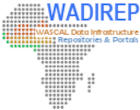In the Sudan Savanna region of West Africa, smallholder agricultural production is almost entirely rain-fed. Some of the major constraints to crop production are low soil fertility and high intra- and inter-annual rainfall variability. The above constraints motivated us to investigate the impact of climate change and different soil and water conservation techniques, for both high and low intensity nitrogen fertilization on yield and yield stability of key crops namely, maize, cotton and sorghum in the Sudan Savanna of Ghana (Vea), Benin (Dassari) and Burkina Faso (Dano). In the empirical studies, we evaluated the effect of tillage practices (contour and reduced tillage), nitrogen fertilizer rates (no nitrogen-N0, recommended nitrogen-NREC and high nitrogen-N2REC) and residue management (improved and standard) on the yield of maize, sorghum and cotton, for two landscape positions (upslope and footslope) in an on-farm researcher managed experiment. The 3 locations each with 3 growing seasons (2012, 2013 and 2014) were analyzed as 9 contrasting or site-seasons. Over all site-seasons, crops planted at the footslope had 31% higher relative yields and 18% higher relative aboveground biomass than those planted at the upslope. Generally, the use of contour ridging in combination with improved residue management and recommended N fertilizer was justified regardless of site-seasons and landscape position. The experimental data from short season maize (Dorke SR) was used to parameterize and evaluate the cropping system model, Decision System for Agro technology Transfer (DSSAT V 4.6) CERES-Maize. The simulated effects of climate change and adaptation options to reduce negative effect of climate change on maize were assessed. Daily climatic data for the period 2040-2060 under the scenarios RCP 4.5 and 8.5 were obtained from Regional Climate Model version 4 (RegCM4). Both scenarios show an increase in mean temperature of 0.7, 1.5 and 1.7oC for Dano, Vea and Dassari respectively as compared to baseline 1985-2004. Precipitation is projected to increase by 40, 44 and 47% in Dano, Vea and Dassari respectively by 2050 under the two scenarios. Assessment of climate impacts on maize grain yield suggest a reduction in yield of 72, 42 and 41% for Dano , Vea and Dassari for no N fertilizer and a reduction in yield of 53, 37 and 11% for Dano, Vea and Dassari respectively under recommended N fertilizer. Analysis of adaptation measures (recommended nitrogen fertilizer, contour ridges and improved residues management as adaptation No 1 (NREC) and high nitrogen, contour ridges and improved residue management as adaptation No 2 (N2REC) with both adaptations tested under single and split dose of nitrogen application) indicated substantial reduction of negative impacts of climate change on maize grain yield as compared to the current practice by farmers (without adaptation). N2REC and NREC were able to reduce the negative impact of climate change on current maize production in the Sudan Savanna by 75 and 45% respectively. On the two methods of N fertilizer application, model estimated 64% for split and 56% for single nitrogen fertilizer application in reducing negative impact of climate change across the three sites relative to the current farmers’ practices. The biggest benefit of reducing the effect of climate change on maize in this study will be the replacement of short season Dorke SR with long duration high temperature tolerant maize cultivar with high thermal requirements. This cultivar will develop under more favorable thermal and rainfall conditions, increasing the duration of vegetative phase, which intend will lead to increased yield. Policy makers should therefore create the enabling environment for farmers to afford credits to change crop and agronomic strategies in response to negative impact of climate change. Additionally improving the knowledge and skills of the few extension agents in the Sudan Savanna region on climate change and adaptation strategies is crucial in successful adaptation program to combat climate change.
Data and Resources
| Field | Value |
|---|---|
| Modified | 2025-03-29 |
| Release Date | 2019-09-13 |
| Identifier | b4cc3444-3d9f-4230-90c8-999eb1a52da7 |
| Spatial / Geographical Coverage Area | POLYGON ((-3.16402 12.30849, -3.16402 9.8938, 1.75786 9.8938, 1.75786 12.30849)) |
| Covered Regions/Countries | |
| Temporal Coverage | Friday, November 13, 2015 (All day) |
| Language | English |
| Contact Name | Isaac Danso |
| Contact Email |

![[Open Data]](https://assets.okfn.org/images/ok_buttons/od_80x15_blue.png)